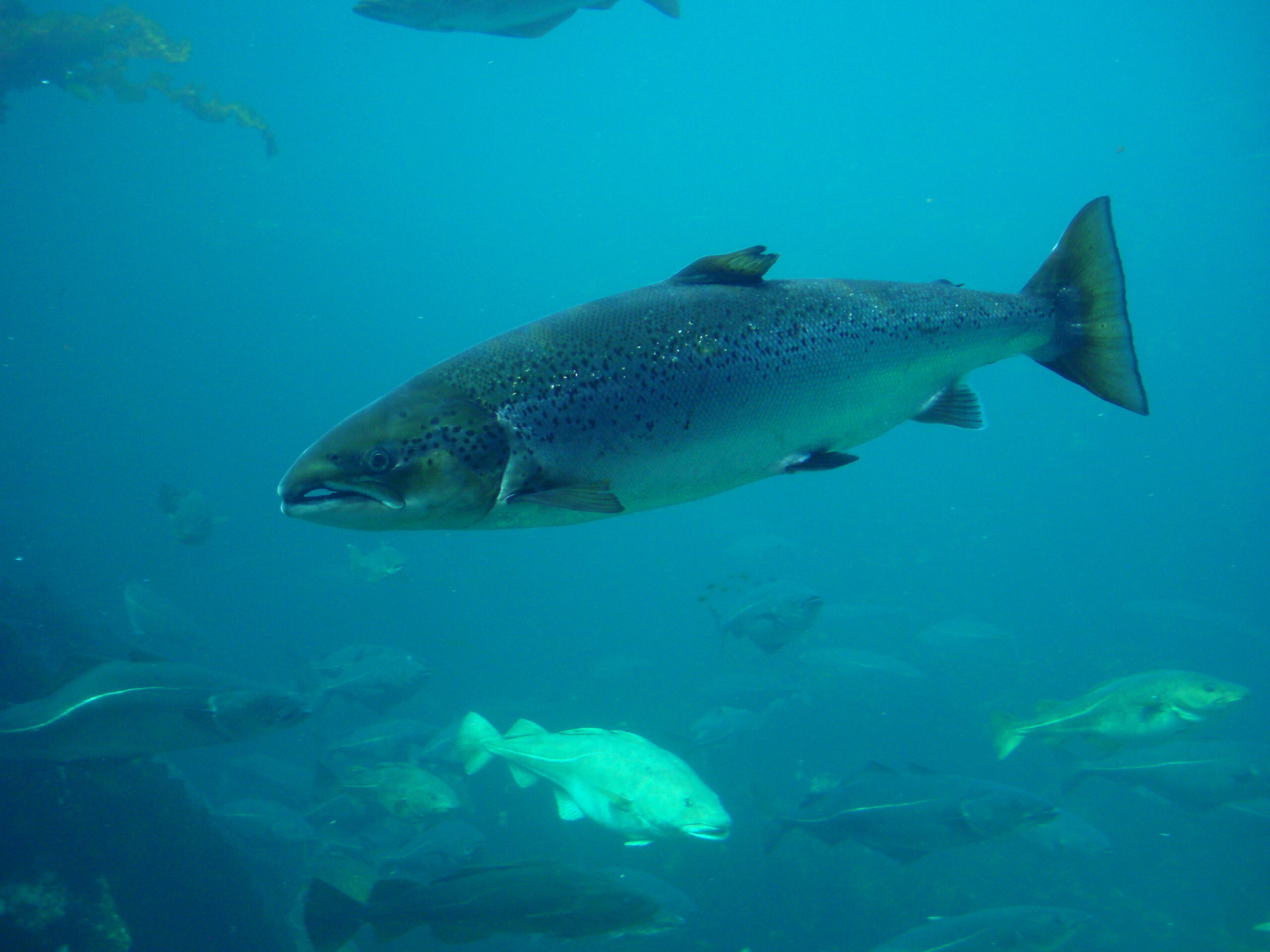This post was last updated on June 28th, 2014 at 01:22 pm
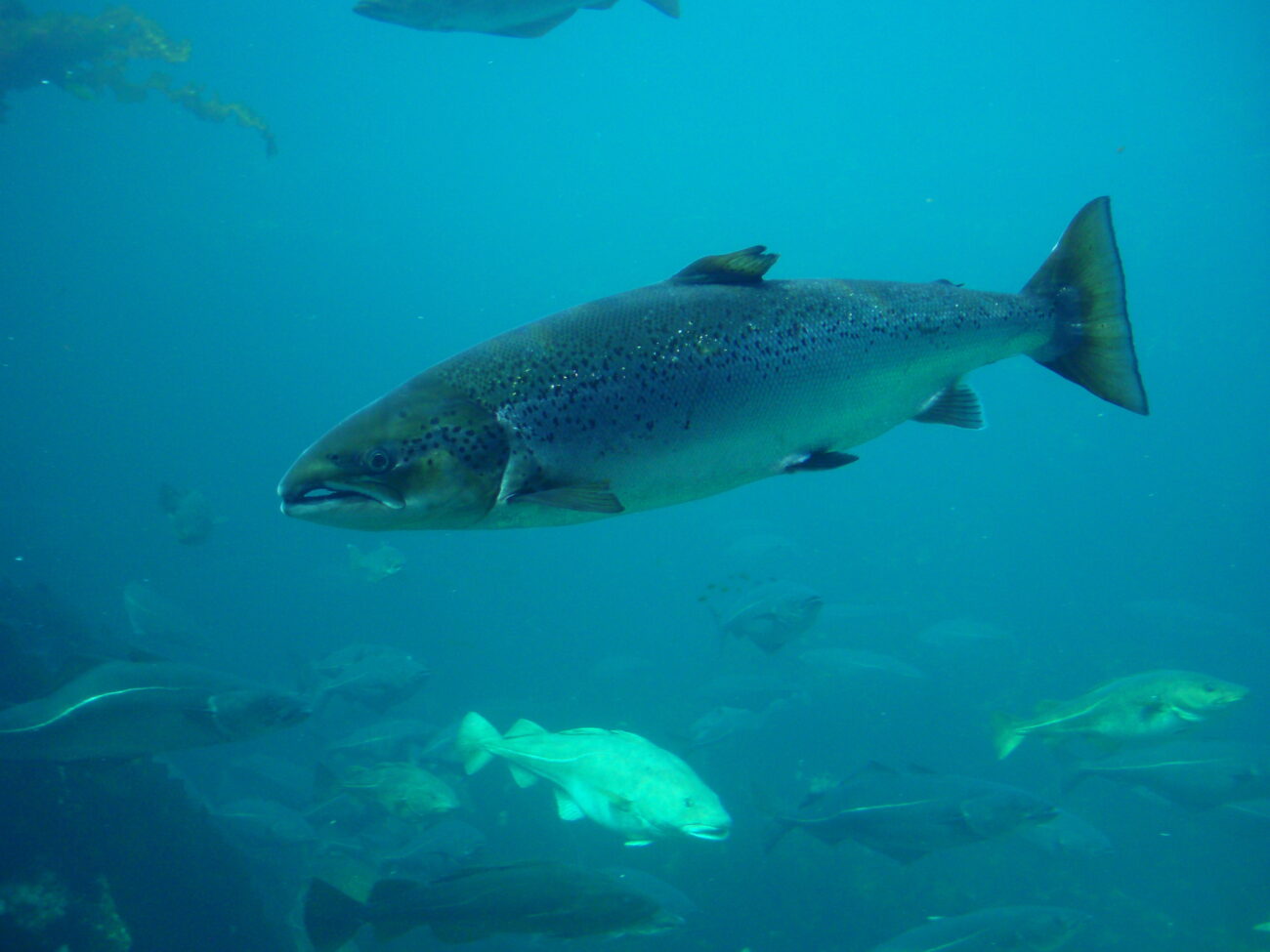
Guide to Atlantic Salmon-
Atlantic salmon go by many different names. These include: bay salmon, black salmon, caplin-scull salmon, Sebago salmon, silver salmon, fiddlers, and outside salmon. Here’s everything you might want to know about the life of an Atlantic salmon.
Where They Live
This type of salmon can be found on both sides of the Atlantic—from the east coast of North America to the rivers of western Europe. In more recent years, humans introduced them to the waters on the other side of the United States as well—which means it’s actually possible to catch an Atlantic salmon while fishing in the Pacific!
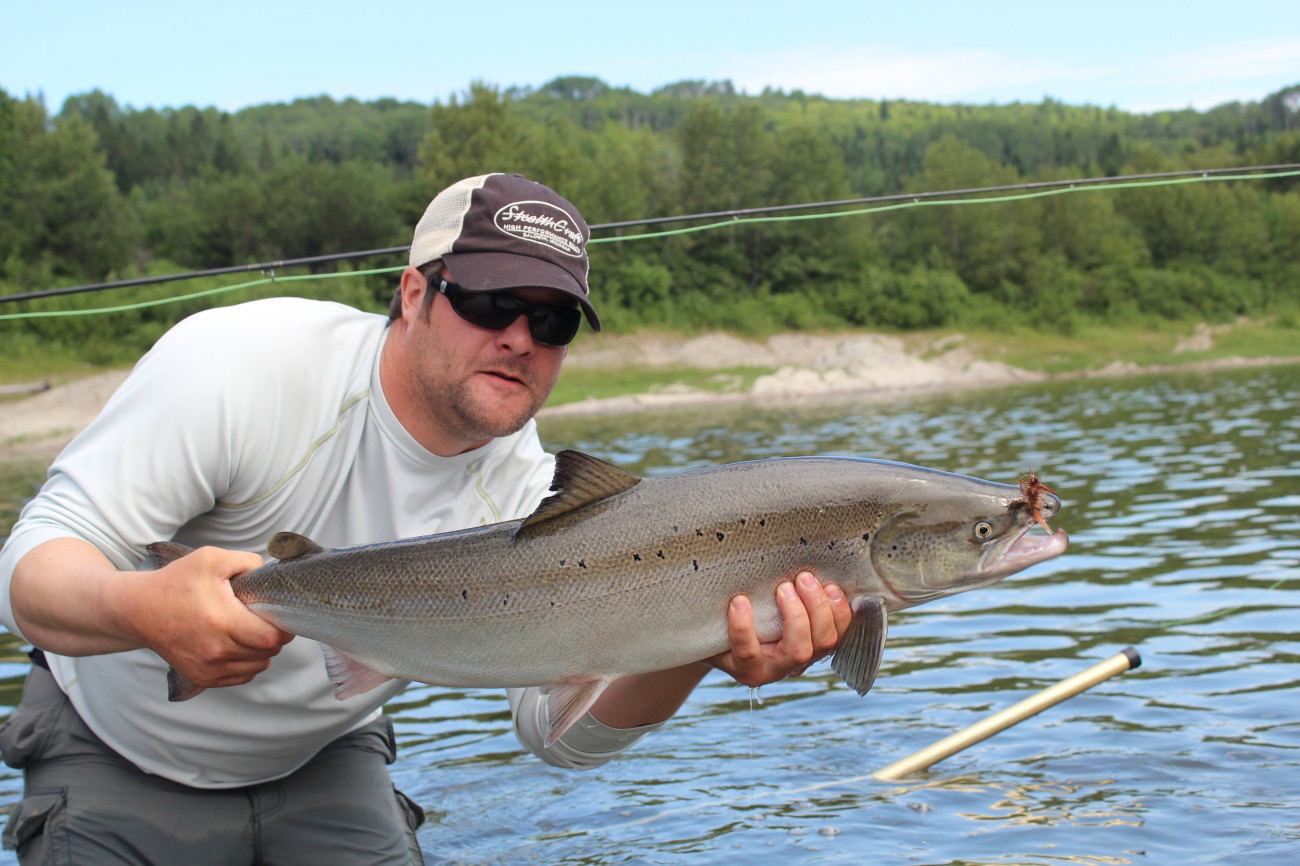
Size
Atlantic salmon remain relatively small during the time they spend in freshwater, but experience explosive rates of growth once they make it to the ocean. After two years at sea, the average fish is 10-15 pounds and 28-30 inches long. In some cases, Atlantic salmon have been found weighing up to 99 pounds! However, it’s rare that any adult Atlantic salmon makes it over 30 pounds.
Appearance

Preparing an Atlantic Salmon for Release – from Flyfishingisfun on Vimeo.
As salmon age, they change in appearance. They are born with a coppery skin tone and blue and red spots, but as they get older their skin turns silver blue. The easiest way to identify Atlantic salmon is to look for black spots above their lateral lines on their gill covers, and fins bordered with black on the edges. Breeding males will often have a green or red sheen to their skin.
Spawning Habits
Atlantic salmon breed in their home rivers, so they will often travel great distances to reproduce. Streams make the most ideal spawning grounds, especially ones with no silt and small gravel at the bottom. Females use their tails to hollow out a depression in the river bottom, where they lay up to 1600 eggs per kilogram of their own body weight, allow the eggs to be fertilized, and then bury the eggs and sperm under loose gravel.
Atlantic salmon are one of the only types of salmon that will spawn more than once in their lifetimes. It’s an arduous, dangerous journey, so many don’t succeed in reproducing multiple times, but that doesn’t stop them from trying!
Life Cycle
After hatching, Atlantic salmon spend one or two years in their birth rivers (time spent in freshwater increases the farther north the salmon live—some upper Canadian species spend five to eight years in their rivers), before swimming out to sea, typically between March and June. They spend one to four years in the ocean before returning homeward to spawn children of their own.
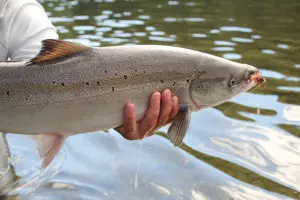
Feeding Habits
In their youth, Atlantic salmon typically feed on insects such as stoneflies, mayflies, and caddis, though some will cannibalize unguarded salmon eggs. Once they’re older and live in the ocean, they opt for larger food, including other fish, shrimp, squid, and eels.
Predators
Sharks and seals are partial to a salmon dinner, and other ocean fish feast on young salmon. During their life in rivers, Atlantic’s face danger from human fishermen, bears, and (while they’re young and still small enough) certain types of birds.
Behavior
Atlantic salmon are the gang members of the sea, typically traveling in schools and acting aggressively towards other fish. They’ve been known to attack other types of salmon, such as coho and even kings, which is why it’s not a good idea to mix them into oceans and rivers where other types of salmon live.
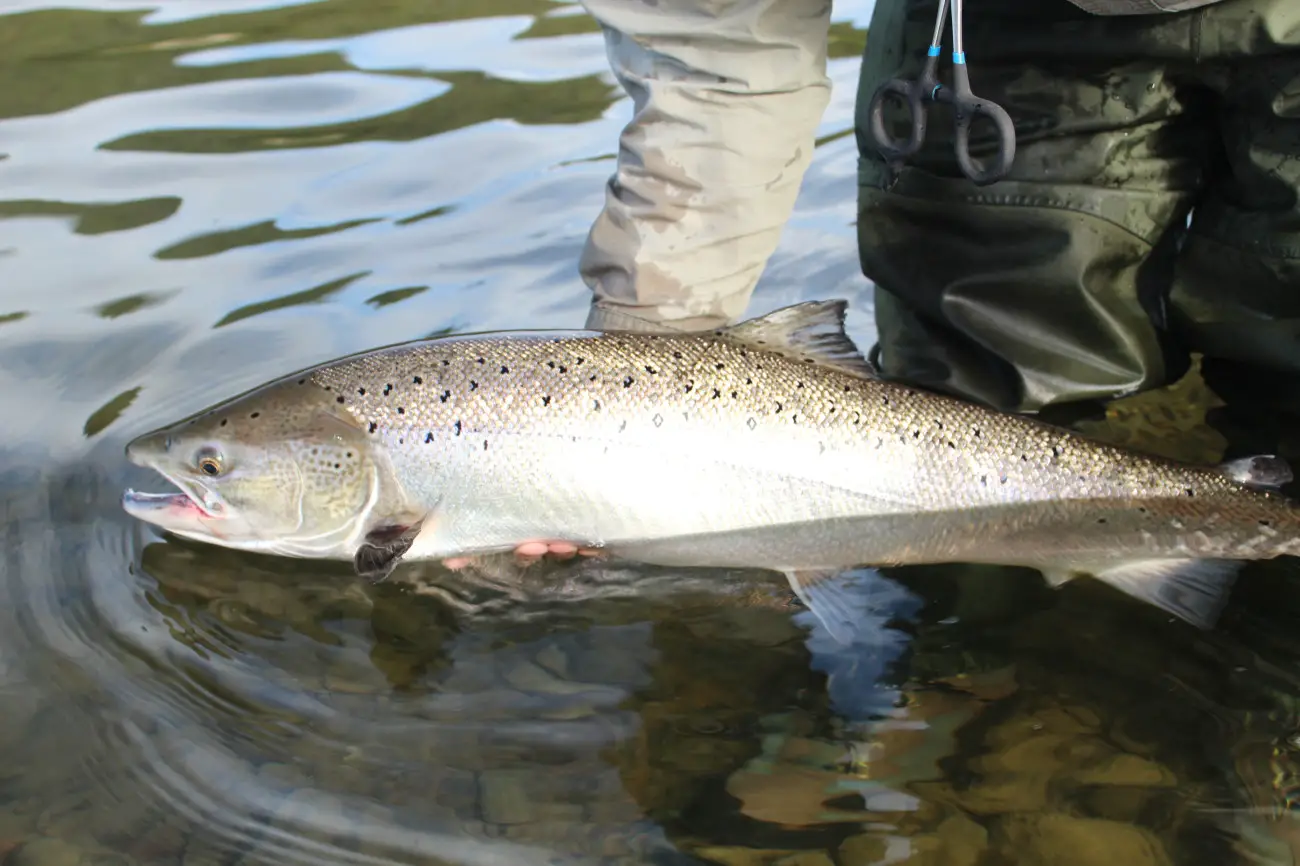 Fun Facts About the Atlantic Salmon
Fun Facts About the Atlantic Salmon
• Some Atlantic salmon are landlocked and spend their entire lives in freshwater. These are referred to as “ouananiche” and are usually the result of human intervention.
• Atlantic salmon have been known to mate with brown trout, resulting in salmon-trout hybrids.
• In the 13th century, Edward I made it illegal to fish for salmon during certain types of the year—one of the first anti-overfishing legislative actions!
• When Atlantic’s return to their native rivers after living in the ocean, they lose all their teeth and grow new ones.
• The fish locate their home rivers using sense of smell. And it’s a pretty foolproof system: only 5% of all spawning Atlantic salmon swim up the wrong rivers!

